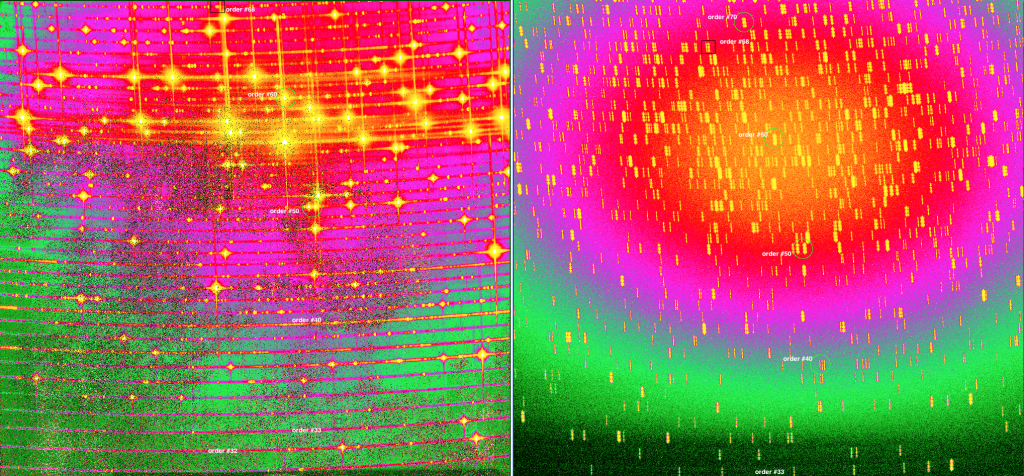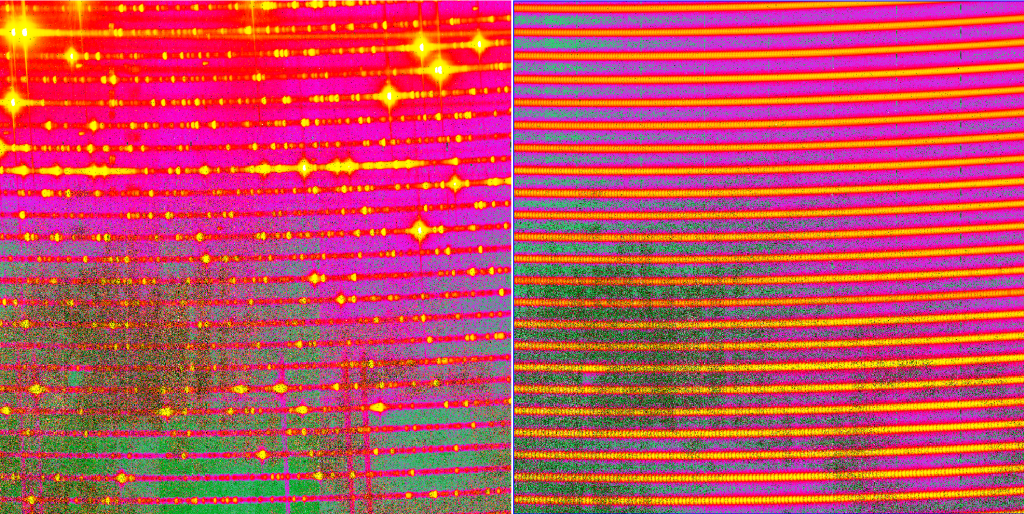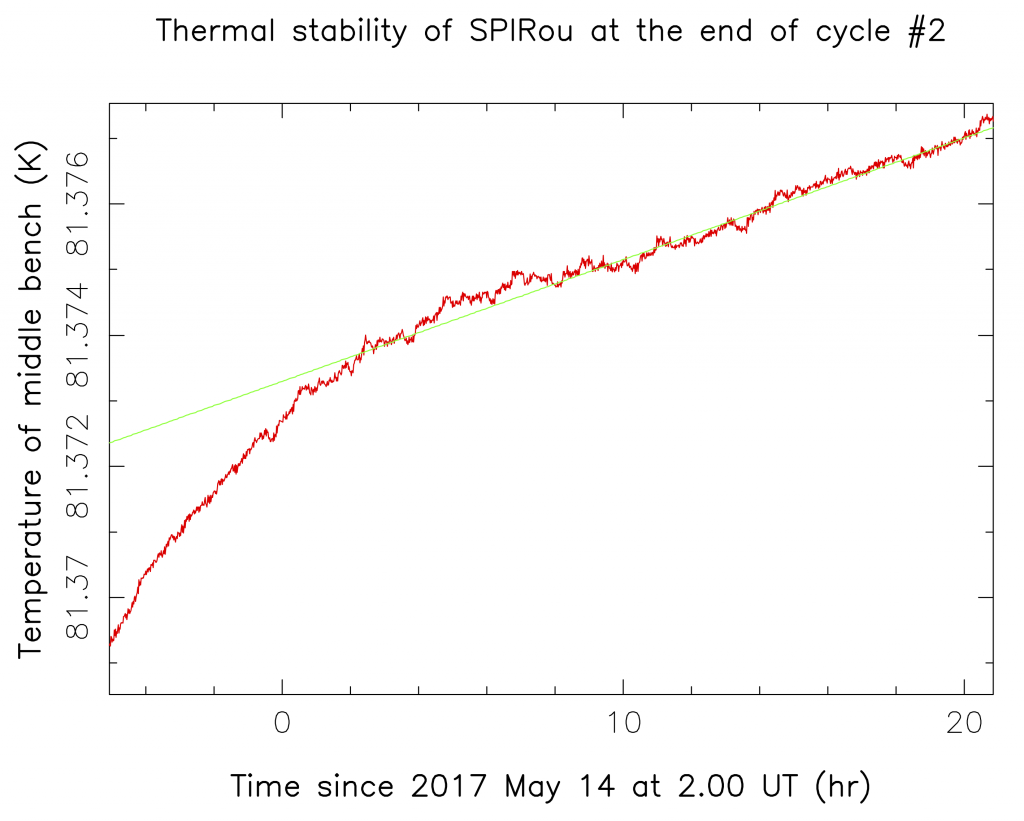2017 May: second cryogenic cycle for SPIRou
Spectrograph focus and thermal stability on good tracks
The second SPIRou cryogenic cycle is reaching completion, with the spectrograph now warming up since May 14th.

Following the dewar closure on April 25th, the spectrograph started its cool down phase on April 27th and reached a temperature of 80K on May 8th, implying a total cooling time of under 10 days.
In the mean time, hundreds of exposures were recorded with the instrument, showing spectra of calibration lamps (halogen lamps for flat fields, Th-Ar, U-Ar and U-Ne hollow cathode lamps, and a Fabry-Perot etalon fed with a laser-driven light source) collected with and without the Hartmann mask. The main goal was to diagnose how well the spectrograph focus was improved following the optical realignment achieved after cycle #1. We find that the spectrograph is now much better focussed, with a defocus reduced to about 0.25mm, a factor of 4 smaller than that in the first cycle. Given these two first steps, we are quite optimistic to reach a focus close to optimal for the next cooling cycle.
The second main goal of this new cycle was to demonstrate that the spectrograph was compliant with our stringent specification (of 2 mK rms) on thermal stability. We showed that the spectrograph was stable down to a level of 1.6 mK rms during the last 24 hr of the second cycle (0.7 mK rms during the last 12 hr), i.e. about 5 days after reaching its nominal temperature of 80 K. This validates one of the most critical and toughest SPIRou technical specifications, establishing further that the team is on good tracks to validate the instrument in the coming months. Last but not least, this cycle was used to further qualify the calibration lamps to be used with SPIRou, and determine the light sources and flux levels that will produce the optimal calibration accuracy.
SPIRou will be opened for a few days (May 20th to 24th) before starting a new cooling cycle and hopefully a long series of validation tests if focussing is close to nominal. We expect SPIRou to reach nominal temperature on June 5th.





